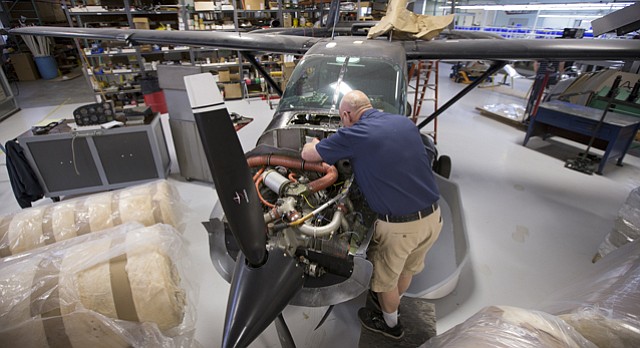3D printing parts for space. Almost sounds like science fiction.
Almost.
McFarlane Aviation Products designs and manufactures over 5,000 different quality FAA-PMA parts for Cessna, Piper, Grumman, Beechcraft and Ag Cat aircraft. They are also looking to expand their customer base to NASA and other aerospace customers.
A new expansion in July is making room for McFarlane Aviation to include 3D printing to their production process. A new sister company specialising in 3D printing, McFarlane AMS, will be set up in the new building, and hopefully with some help from the Federal Aviation Administration, they will be printing parts bound for space!
General Manager, Dan McFarlane, said, “This technique complements what we do here, but it is also our hope it will allow us to branch out and reach new customers in the aerospace industry.” He says that the company has been testing and studying 3D printing processes for 18 months now, but it was a NASA consultant he partnered with on projects while an aeronautical engineering student in college that propelled the project forward. There is a hitch though. The parts need to be tested to make sure they are as safe as those made with traditional practices.
“The challenge is FAA certification,” McFarlane said. “It’s basically a new manufacturing process with not enough history of durability or reliability. We will be working closely with the FAA to certify those processes. It’s a lot of testing and a lot of research and development.”
The company is currently looking for a partner to get the project going, due to the high price tags of the printers and the building expansion, but have candidates with stakes in the FAA certification interested.
“We’re leveraging our existing engineering and quality control resources to get this off the ground,” McFarlane said. “Because we’re investing so much to get FAA certification and in infrastructure, we will be partnering with a machine manufacturer who sees the value of what we are doing. We’re going to be the one that gets it up and going for the broader aerospace industry.”
The two 3D printing machines the company will install have 12-inch cubic printing chambers. The printing process can be lengthy, up to 10 minutes per part, and requires considerable advanced programming and engineering.
“Where you get your best value in production is in making multiple pieces or high-value parts,” he said.
With most small and intricate parts there is usually a lot of waste. But because of the nature of 3D printing, this process can cut waste down and be incredibly environmentally friendly. It’s also very cost effective, with complex intricate parts usually being more expensive to manufacture costing much less.
Seeing this kind of technology being pioneered by a company started in the 1970’s is like peering into the future. Before we know it, we will be seeing more than just 3D printed parts headed out to space.



